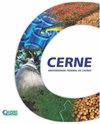GROWTH PROMOTION OF GENETICALLY IMPROVED Pinus taeda SEEDLINGS BY INOCULATION WITH SPECIES OF Bacillus.
IF 0.7
4区 农林科学
Q3 FORESTRY
引用次数: 0
Abstract
This study was carried on evaluating effects of inoculation with Bacillus species and generations of genetically improved seeds on Pinus taeda growth in nursery conditions. Two experiments, based on distinct inoculation methods (sowing and post-emergence) were performed under a 3 x 2 factorial, completely randomized block design (3 levels of inoculation and 2 levels of genetic improvement of Pinus taeda). Plant height and diameter were measured at different stages along seedling development. At harvest, root volume, root fresh and dry mass, shoot fresh and dry mass and quality index were also estimated. Data were submitted to a two-way analysis of variance (p<0.05) and Tukey ́s test was used to separate means (p<0.05). Data from experiment with inoculation at sowing showed that Bacillus amyloliquefaciens improved plant height (20%) and shoot dry mass (28%) of 2.0 generation seedlings compared to control plants. Regarding postemergence inoculation, plants from 1.5 generation presented more pronounced effects of Bacillus amyloliquefaciens. Overall, inoculated seedlings were 9.8% taller and produced 60% more root dry mass than non-inoculated plants. Regardless of seedling generation, B. amyloliquefaciens increased Dickson Quality Index by 30%. These results suggest that each generation of genetically improved P. taeda has different growth responses to B. amyloliquefaciens. Methods of inoculation, combined with level of genetic improvement, must also be considered to obtain the best benefit to seedling development when using this rhizobacterium. Based on the current findings, inoculation with B. amyloliquefaciens should be incorporated as a silvicultural practice to improve growth of P. taeda under nursery conditions. 1Federal University of Paraná, Curitiba, PR, Brazil. ORCID: 0000-0001-7556-6373a 2Primon Mudas Florestais. Curitibanos, SC, Brazil. ORCID: 0000-0002-7115-5312a 3Federal University of Santa Catarina, Curitibanos, SC, Brazil. ORCID: 0000-0001-9624-3186a, 0000-0002-78052789b几种芽孢杆菌接种遗传改良火炬松幼苗的促生长作用。
在苗圃条件下,研究了接种芽孢杆菌种属和遗传改良种子对红松生长的影响。采用3 × 2因子、完全随机区组设计(3个接种水平和2个遗传改良水平),采用不同接种方式(播种和出苗后)进行2个试验。在幼苗发育的不同阶段测量株高和株径。收获时测定根系体积、根系鲜干质量、地上部鲜干质量和品质指标。数据采用双向方差分析(p<0.05),采用Tukey’s检验分离均数(p<0.05)。播期接种试验数据表明,与对照植株相比,解淀粉芽孢杆菌使2.0代幼苗株高提高20%,茎干质量提高28%。在苗期接种方面,1.5代的植株对解淀粉芽孢杆菌的影响更为显著。总体而言,接种苗比未接种苗高9.8%,根系干质量增加60%。无论幼苗世代如何,解淀粉芽孢杆菌均可使Dickson品质指数提高30%。这些结果表明,每一代基因改良的taeda对解淀粉芽胞杆菌有不同的生长反应。在使用这种根菌时,还必须考虑接种方法和遗传改良水平,以获得对幼苗发育的最佳效益。根据目前的研究结果,应将接种解淀粉芽孢杆菌作为一种造林措施,以改善苗圃条件下的柽柳生长。1帕拉纳联邦大学,库里蒂巴,PR,巴西。ORCID: 0000-0001-7556-6373a 2Primon Mudas Florestais。库里提巴诺斯,南卡罗来纳州,巴西。ORCID: 0000-0002-7115-5312a 3圣卡塔琳娜联邦大学,库里蒂巴诺斯,SC,巴西。ORCID: 0000-0001-9624-3186a, 0000-0002-78052789b
本文章由计算机程序翻译,如有差异,请以英文原文为准。
求助全文
约1分钟内获得全文
求助全文
来源期刊

Cerne
农林科学-林学
CiteScore
1.60
自引率
0.00%
发文量
2
审稿时长
6-12 weeks
期刊介绍:
Cerne is a journal edited by the Federal University of Lavras, Minas Gerais state, Brazil, which quarterly publishes original articles that represent relevant contribution to Forestry Science development (Forest ecology, Forest Management, Silviculture, Technology of Forest Products).
 求助内容:
求助内容: 应助结果提醒方式:
应助结果提醒方式:


